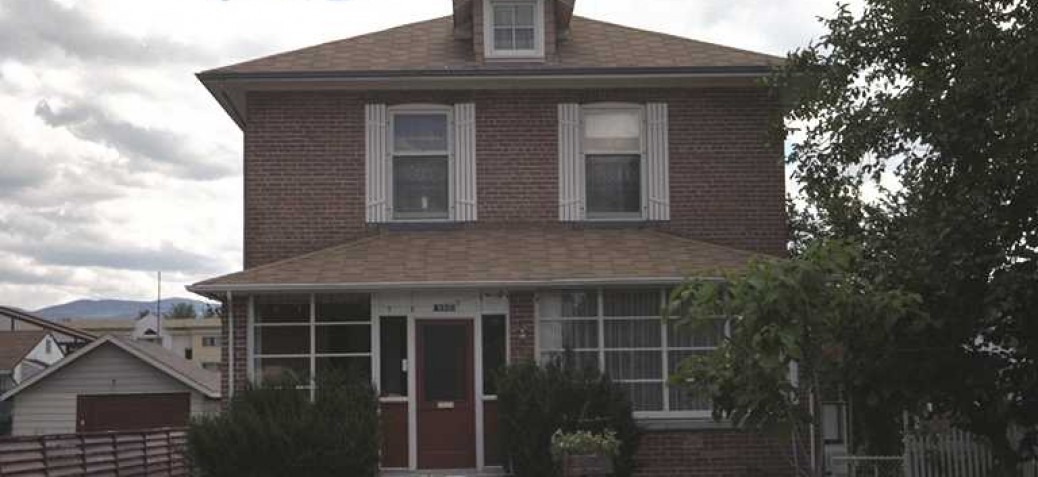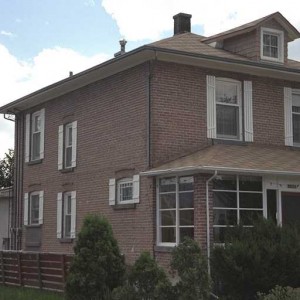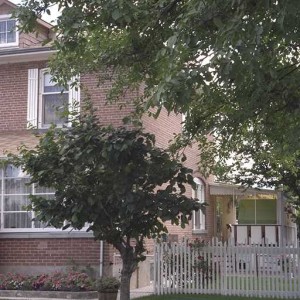Clement House
Place Description
The historic place is the two-storey, brick Clement House, built in 1912 in the Foursquare style as part of a large agricultural-residential complex located at 1049 Borden Avenue, in Kelowna's South Central neighbourhood. The Clement Barn, located at 1019 Borden Avenue, is a separate historic place that forms part of the complex, and is described separately.
Heritage Value
The heritage value of the Clement House is primarily derived from its association with Charles Clement, who was active in the fruit-packing and construction businesses, two key industries that shaped early Kelowna. The house is also valued for Foursquare design, and for being a prominent dwelling built during Kelowna's first phase of civic development.
Charles G. Clement (1867-1962) arrived in Kelowna in 1900, following his parents, who came in 1898. Clement has heritage value for his experience in Kelowna's fruit and construction industry, particularly the latter. He worked in 1902-03 as foreman for the Stirling and Pitcairn packinghouse, and supervised the packing and shipping of the first export apples to leave Kelowna. By 1905 Clement had his own business, a cement and concrete block factory. Two years later he built the First Baptist Church on Ellis Street using these blocks. Between 1911 and 1914 he was a partner in Clement Riggs Ltd., which operated a brickyard that turned out about 100,000 bricks every two weeks, therefore contributing in a big way to the local construction boom. The company used the bricks in building the Casorso and Rowcliffe Blocks, among others. As a result of the 1913 depression, the brickyard closed and Clement lost his business.
The house also has value for being a very good example of the Foursquare manner, characterized by a hipped roof over a squarish plan, and is a relatively rare example faced in brick.
W.T. Ortt owned the house in the 1930s, as well as the house at 911 Borden Avenue. In 1953 Waldemar Mueller, who was still the owner in 1983, bought the house from Winfield McInroy. He is listed as a labourer at Kelowna Sawmill, and so this later, long-time resident makes the house represent a third important local industry, sawmilling.
Character Defining Elements
- Location on Borden Avenue, forming part of a larger agricultural - residential complex, and in Kelowna's South Central Neighbourhood
- Residential form, scale and massing, expressed by two-storey height and nearly square plan
- Medium-pitch hipped roof penetrated by a dormer window on the front elevation
- 2 brick chimneys
- Entrance porch (presumably formerly open), covered by a medium-pitch roof
- Brick-veneer walls, made of locally manufactured brick
- Symmetrical second-floor fenestration, with 1-over-1 wood-sash windows with narrow wood trim
- Several mature trees throughout property, particularly by the street






